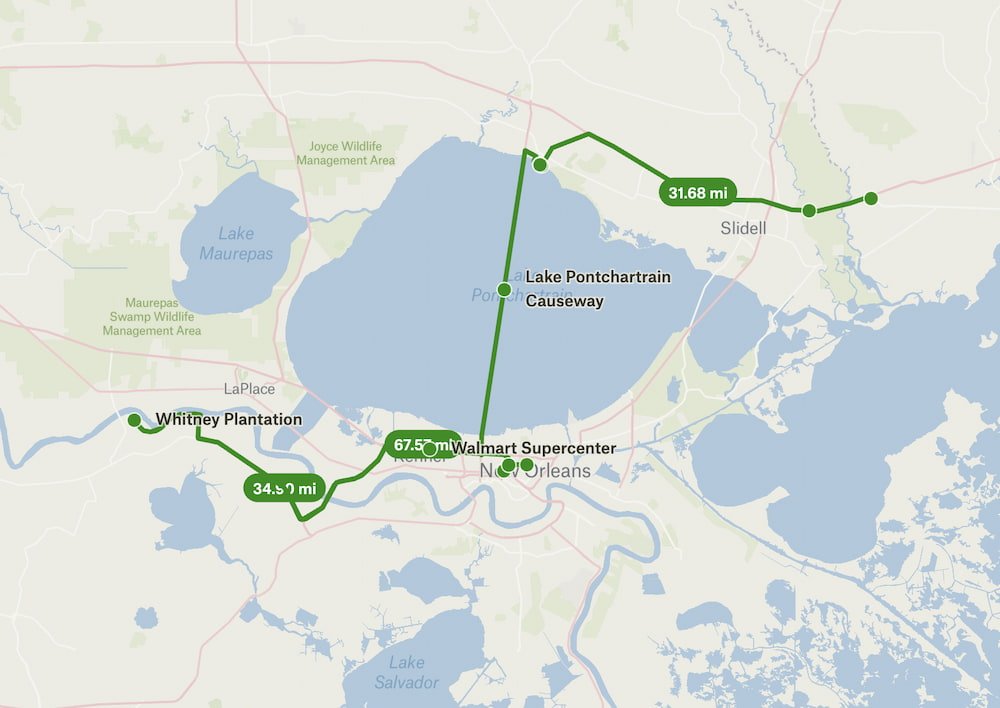After yesterday's "tiring tire tale", we needed a 4th person to come and inflate our spare tire so we could hit the road. It was a Sunday, but eventually someone came around 11am--and it turned out to be the father of the 3rd person who came last night operating the same tow truck company. The 3rd person was able to replace the tires, and his dad fortunately arrived and inflated all our tires, so we are now all set. We have our flat tire at the back that deflated because it ran over a ginormous nail, so at some point we'll have to get that patched up so we have another spare, just in case.
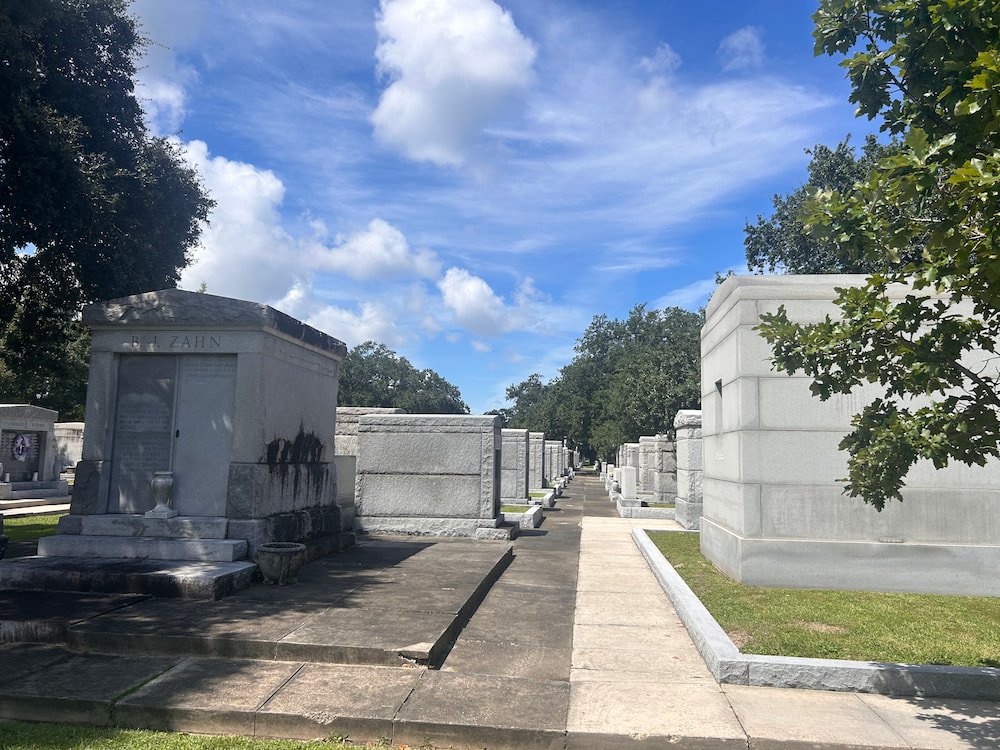
Finally... we are off! We passed the Metairie Cemetery, a historic cemetery in New Orleans that was founded in 1872. Cemeteries are often visited by tourists in New Orleans, because they have above-ground tombs (since the water line is so low, graves need to be above ground so that coffins don't float up), and there's a lot of artistic and intricate vaults and mausoleums that carry a lot of mysticism and folklore. The Metairie Cemetery has a lot of famous people who have been buried there, including Anne Rice, author of "The Vampire Chronicles" that was later adapted into the movie "Interview with the Vampire." Unfortunately though our RV was too big to park inside, but we saw enough of the graves lined up in there before we had to do a 20-point turn to leave!
The Whitney Plantation
The southern region of the US has a long and sordid history with slavery--we've seen plaques, memorials and statues detailing the injustices and atrocities that have happened, as well as the continued racism and oppression from lynching, riots, the Civil Rights movement, and other events. One of the places we hadn't yet been to was a plantation, a large agricultural estate dedicated to growing crops, where landowners used slaves to produce them. aved labor used to produce crops for export.
While there are many plantations that people can visit, we felt that the Whitney Plantation was the best one for us to see, as rather than focusing on the architecture of the plantation or the owners, this one is a non-profit museum dedicated to the history of slavery.

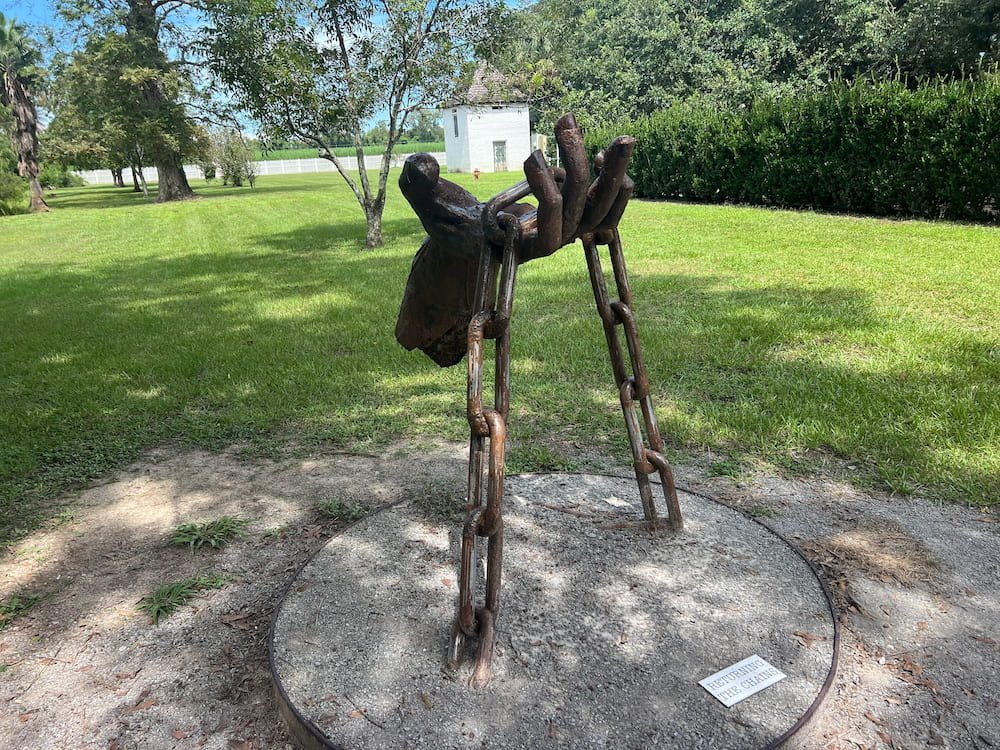
Luckily we were able to find a parking spot (parking horizontally across multiple spaces) as the lot is not particularly big, as there weren't too many folks visiting on the Sunday we were there. There's an option for a self-guided tour, but we decided to do a guided tour, showing up to be on the next one at 1.30pm (in peak periods it's better to book in advance to make sure there are spots available). When we got out of the RV, however, we'd noticed yet another RV issue, immediately following our tire saga: the tray holding our stuff in the back storage area had collapsed, so that it was hanging precariously low to the ground! Had it been any lower, we would have lost stuff that was there, without evening realizing it. It's definitely due to the terrible roads, that make our RV shake and bump so violently--and make our already flimsy back storage area even more volatile. We will need to fix it after the tour.

The Whitney Plantation operated from 1752-1975, with slaves working on the sugar, indigo and rice fields until emancipation in 1865. A group of almost 30 of us gathered around our guide, a young lady called Dom who is a direct descendent of some of the slaves who worked and lived here. We first went to see a replica of a church that would have been onsite. The altar has a lot of sculptures of enslaved boys and girls, which represent slaves who were once here. Each of our lanyards that came with admission had a picture of one of the children, with their story on the back.

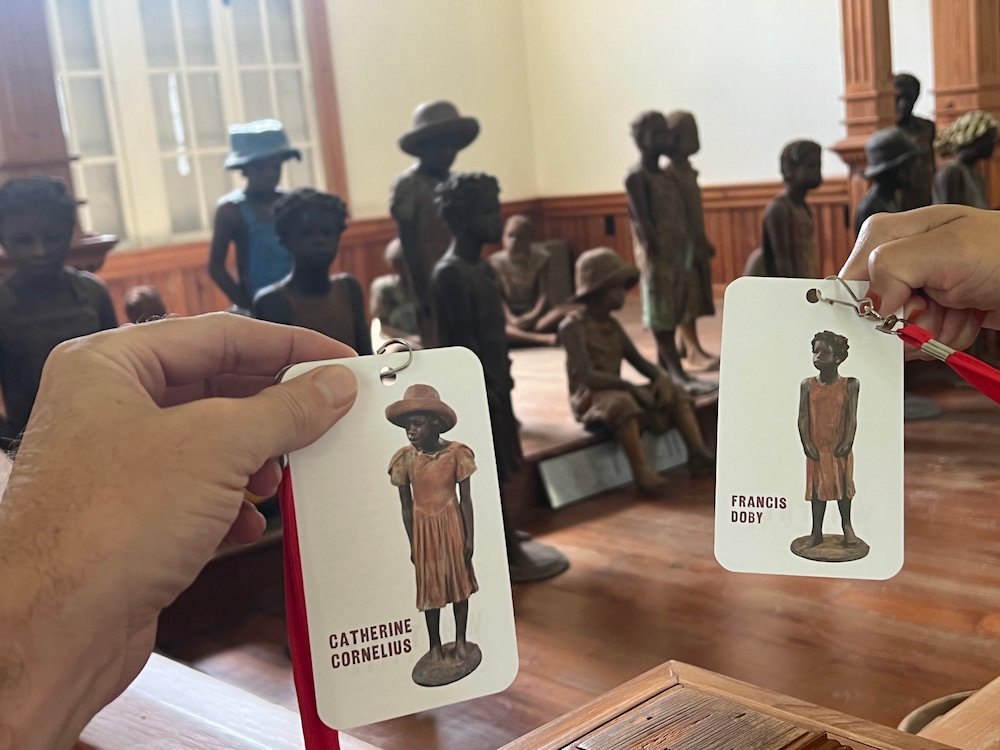
We saw a memorial with the names, ages and roles of the slaves who worked here, and then walked around the grounds and inside the two-story Big House that slaves built for the owner's home (the family, originally from Germany, lived here for 75 years). The kitchen was built separate to the house due to the heat where we saw various cooking artifacts.



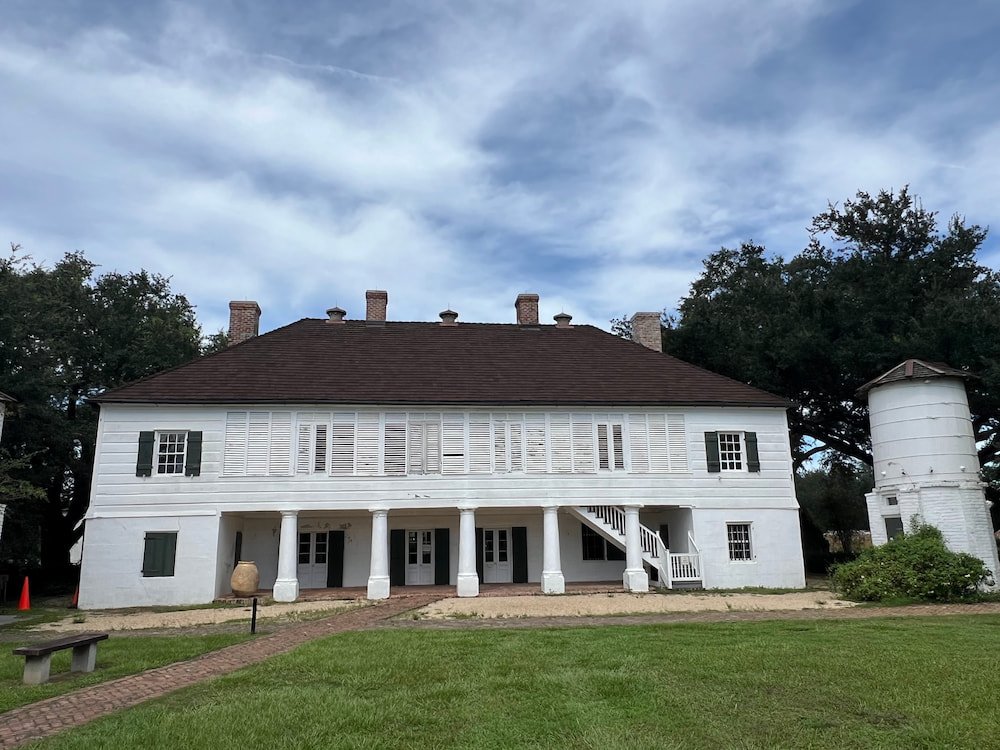


There was also a rebuilt blacksmith shop, which was used in one of the final scenes in the movie "Django Unchained," as well as several cells used as punishment for the slaves, which was difficult to see and overtly realize what happened here. We saw the quarters where the slaves lived, and towards the end of the tour, another memorial dedicated to the enslaved children who had died. It was horrifying to know that many enslaved women were raped by their owners, and the offspring then became slaves, as a person who had any African blood was concerned less than human. These enslaved women were also treated like breeding factories to produce more labor for the plantation, and oftentimes, families were also ripped apart, to work at separate plantations, with many family members never seeing each other again or knowing the whereabouts of their relatives.


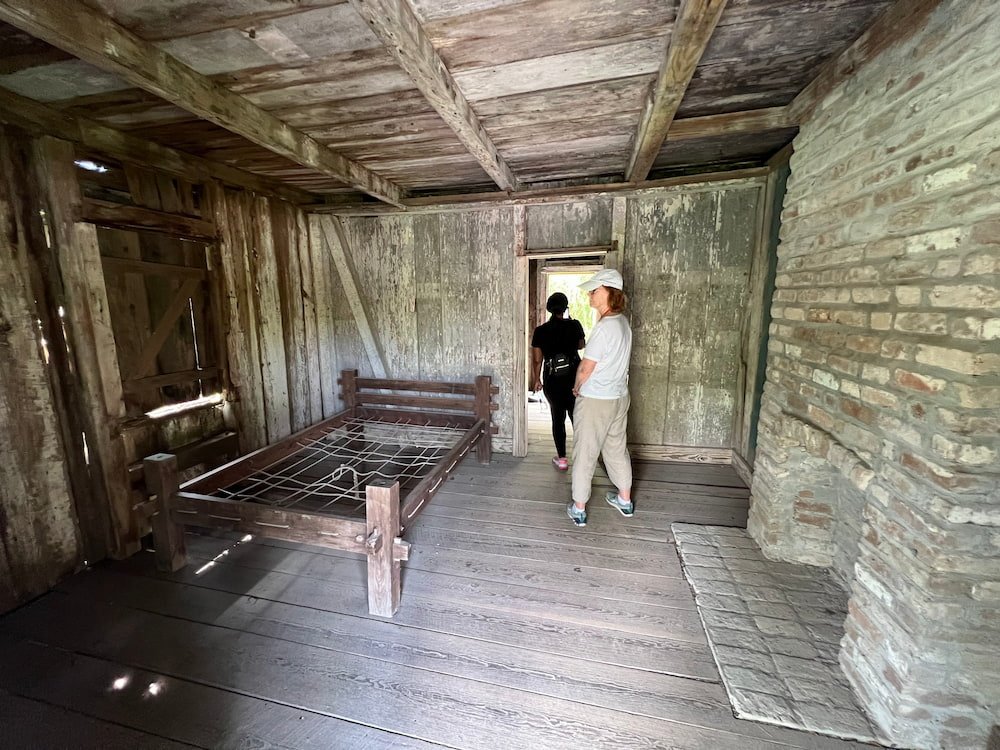

There was a particularly poignant monument towards the end of the tour showing 63 enslaved men's heads on steel rods, which are to commemorate the failed 1811 German Coast Slave Revolt. Those brave enough to revolt were captured, beheaded and placed on poles. Apparently this revolt isn't really taught in US schools, so the memorial is a powerful way to pay tribute to the courage and sacrifice of these men. Over 350 people were enslaved at the Whitney Plantation, and we learned a lot about the history of slavery from this 2-hour tour. We're glad that a place like this exists to continue to educate people on a very dark but important chapter of US history.

After our visit, we took out our stuff from the back of the RV, with Michael putting the collapsed tray back up as best as he could with the screws we had. We moved some of our items inside, so that there's nothing heavy resting on the left-hand side, but we'll have to probably get a new metal tray of some sort, and thicker screws, so that it's more firmly in place.
Hello again, Mississippi
Leaving the Whitney Plantation, we saw a few more plantations nearby (interestingly, there are some plantations that are used for wedding venues--not sure how we feel about this being a place to get married, given the human suffering that occurred here). We passed these historic buildings and fields, soon arriving at the quaint Southern city of Mandeville, with its historic houses and mansions from the late 1800s and early 1900s, located along the Lake Pontchartrain. It was lovely to walk around in the late afternoon, with many other folks walking their dogs, jogging, or simply sitting around and enjoying the views of the lake.




There wasn't really anywhere for us to park in this posh-looking neighborhood, so we crossed back over into Mississippi, finding a rest stop to spend the night. Interestingly, in Mississippi the rest stops make a point of noting whether there is security at the site or not, and we were in a rest stop that provided this. Initially we parked between a couple of trucks (as we're apt to to do at these rest stops), but a security guard came over and recommended we park at another spot, which was so much better because we had an area to the side where there weren't any other vehicles immediately next to us (and we were away from the loud generators that trucks tend to leave on). We were happy to have a safe and peaceful night!
Route Map
